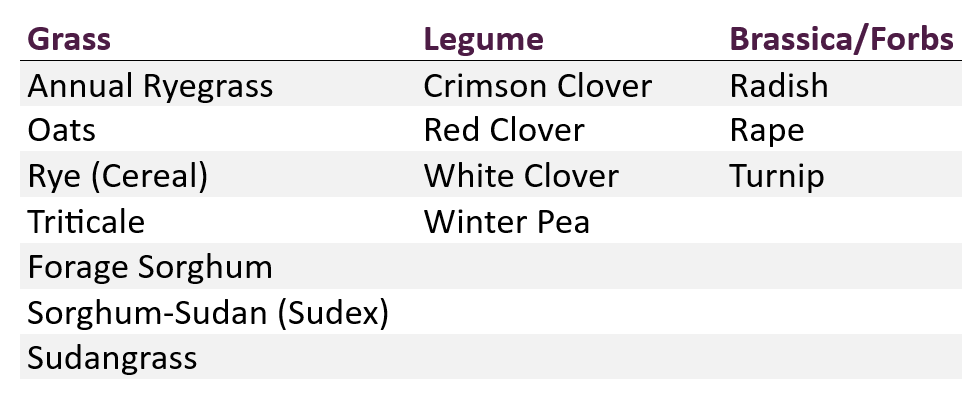Are Cover Crops a Good Alternative Feed Source for Dairy Cattle?
The short answer: Yes, cover crops can be a great alternative feed source for dairy cows. Thinking of cover crops as another annual forage can help growers better manage them on their operation.
Break it down: Cover crops can be used for various purposes on farms, including forage. Choosing the correct cover crop is vital when you are using it as a feed supplement. Research on using cover crops for forages for livestock such as cattle and sheep is abundant.
- Kim Cassida, MSU Extension Forage and Cover Crop Specialist, recommends that growers that want to use cover crops as feed recondition their minds to consider the plants as annual forage not as cover crops.
- Some tips: Select appropriate varieties, fertilize, and manage as a forage.
Consider nutrition: Knowledge of livestock nutritional needs at all life stages should be considered before adding cover crops as a feed source.
- It is important to note that plant maturity and varieties within a species have different nutrient content.
- When choosing a cover crop for its feed value make sure that it is a high-quality forage and will supply the nutrients that your livestock, especially dairy cattle, will need.
Utilizing cover crops for dairy cattle feed and forage is becoming more appealing. Cover crops like rye, triticale, wheat, and winter pea increasingly appear in research as alternative cattle feed.
- Take finances into account: Martin Carrasquillo Mangual, MSU Extension dairy educator, suggests that dairy farms including cover crops as an alternate forage may reduce the cost of purchased feed.
- Growing cover crops can be profitable: The North Central Region SARE produced an excellent guide to profitably growing cover crops.
- Using cover crops on-farm not only provides a valuable feed source, but well-managed cover crops also pose a positive environmental impact and preserve soil. A whole-farm approach should be considered when exploring the use of cover crops.
- When farmers harvest cover crops as feed, they tend to manage the cover crops more like double crops. For example, cover crops seeds are often planted at higher density using a drill (not broadcast), and farmers will often apply manure or fertilizer to the crop to ensure a substantial yield.
Challenges: Successfully growing cover crops can seem daunting. Here are a few tips for improving your experience with cover crops.
- Start small: Incorporate the use of cover crops into your operation over time. Gain experience by starting with a single project and expand the use of cover crops gradually.
- Research multi-species mixes: One of the challenges of adding cover crops into a livestock farm is that there is much more research and data on individual cover crop species compared to multi-species mixes. Multi-species mixes are recommended when planting cover crops as a forage.
- Understand nutrition: Multi-species mixes can change the nutritional components of the forage. When consulting with your farms’ nutritionists, it is vital they understand the needs of the livestock for any operation.
- Pesticide use: Consider the pesticides used in the cropping rotation and follow the label for any rotational restrictions.
Dig deeper: There are many resources available for those interested in adding cover crops into their rotation or for those who want to change what cover crops they grow. Cover crop councils have been established in every region in the United States. State and crop specific information and decision tools have been developed. For example, The Midwest Cover Crop Council (MCCC) has developed a cover crop decision tool that gives users state specific information on growing specific cover crops.
In short, growing cover crops as an alternative food source is a viable option for dairy farmers. Before getting started, we recommend carefully considering which species you can grow in your location, thinking of cover crops as another type of annual forage, and taking the nutrition of cover crop forage into account.
📸Brandon O’Connor, Indiana NRCS









